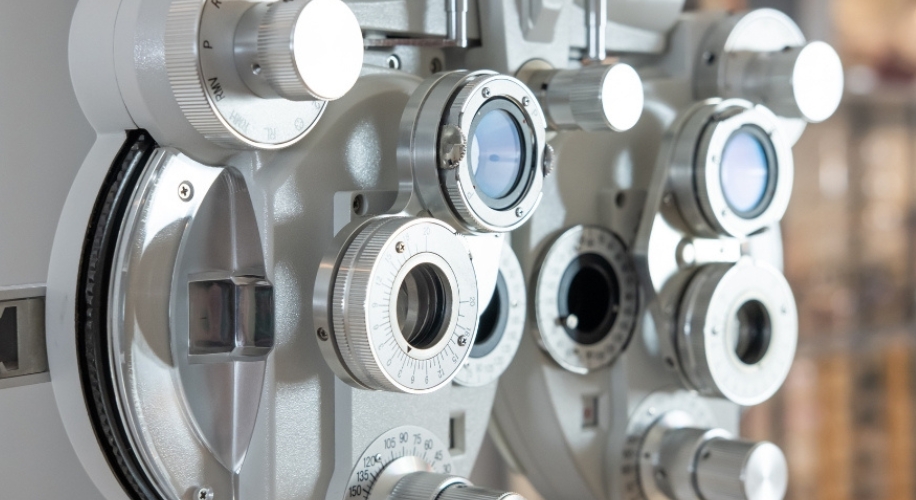What is Macular Edema?
- BY Dr. Steven Liem
- IN Eye Health
Macular edema is an eye condition that affects the central part of the retina, known as the macula. This crucial area of the eye is responsible for sharp, central vision needed for tasks like reading and driving. When the macula swells, it can lead to vision impairment and other complications.
Photo by Teerasan Phutthigorn
Understanding Macular Edema
Macular edema occurs when fluid accumulates in the macula, causing it to swell. This swelling disrupts the normal function of the retina, leading to blurred or distorted vision. The macula is a small, central area of the retina responsible for detailed, central vision, making macular edema particularly impactful on daily activities that require precise vision.
Causes of Macular Edema
Several factors can contribute to macular edema, including:
- Diabetic Retinopathy: One of the most common causes of macular edema is diabetic retinopathy. This condition results from prolonged high blood sugar levels, which damage the blood vessels in the retina. As these vessels leak, fluid accumulates in the macula, leading to swelling and vision problems.
- Age-Related Macular Degeneration (AMD): In age-related macular degeneration, particularly the wet form, abnormal blood vessels grow under the retina. These vessels can leak fluid, causing macular edema and deteriorating vision over time.
- Retinal Vein Occlusion: A retinal vein occlusion occurs when one of the veins in the retina becomes blocked. This blockage can lead to increased pressure and fluid leakage, resulting in macular edema.
- Inflammatory Conditions: Certain inflammatory conditions, such as uveitis or autoimmune diseases, can also cause macular edema. Inflammation in the eye can lead to swelling and fluid accumulation in the macula.
- Eye Surgery or Trauma: In some cases, macular edema can develop after eye surgery or trauma. Surgical procedures, especially those involving the retina, can sometimes trigger fluid buildup in the macula.
Symptoms of Macular Edema
The symptoms of macular edema can vary depending on the severity of the condition.
- Blurred or Distorted Vision: The most noticeable symptom is a decrease in visual clarity. Straight lines may appear wavy or distorted, and central vision may become blurred, such as on the right side of the photo above.
- Difficulty with Detailed Tasks: Tasks that require sharp vision, such as reading or recognizing faces, may become challenging. People with macular edema often struggle with tasks that involve seeing fine details.
- Decreased Color Perception: Colors might appear less vibrant or altered. The swelling in the macula can affect the way colors are perceived.
- Visual Distortions: You might notice that objects appear larger or smaller than they actually are, or that there are blind spots in your central vision.
Diagnosis of Macular Edema
Diagnosing macular edema involves a comprehensive eye examination. Your eye doctor may use several diagnostic tools, including:
- Fundus Examination: A procedure where the doctor examines the back of the eye using instruments, including slit lamp, ophthalmoscope, or retinal camera.
- Optical Coherence Tomography (OCT): This imaging technique provides detailed cross-sectional images of the retina, allowing the doctor to see fluid accumulation and swelling in the macula.
- Fluorescein Angiography: A test in which a special dye is injected into the bloodstream and then photographed as it travels through the blood vessels in the retina. This helps identify any leakage or abnormal blood vessel growth.
Treatment Options for Macular Edema
The treatment for macular edema depends on its underlying cause and severity. Common treatment options include:
- Medication: Anti-VEGF (vascular endothelial growth factor) injections can reduce swelling and prevent abnormal blood vessel growth. Steroid injections or oral medications may also be prescribed to reduce inflammation.
- Laser Therapy: Laser treatment can help seal leaking blood vessels and reduce fluid accumulation in the macula. This is often used for macular edema caused by diabetic retinopathy.
- Surgery: In severe cases, surgical options such as vitrectomy (removal of the vitreous gel) may be considered to address underlying issues causing macular edema.
- Managing Underlying Conditions: Controlling underlying conditions such as diabetes or hypertension is crucial for preventing and managing macular edema. Regular monitoring and maintaining optimal blood sugar and blood pressure levels can help reduce the risk of swelling in the macula.
Photo by Antoni Shkraba
Conclusion
Macular edema is a condition that can significantly impact vision and quality of life. Early detection and treatment are key to managing the condition effectively. If you experience any symptoms of macular edema, it’s important to consult with an eye care professional to determine the best course of action.




